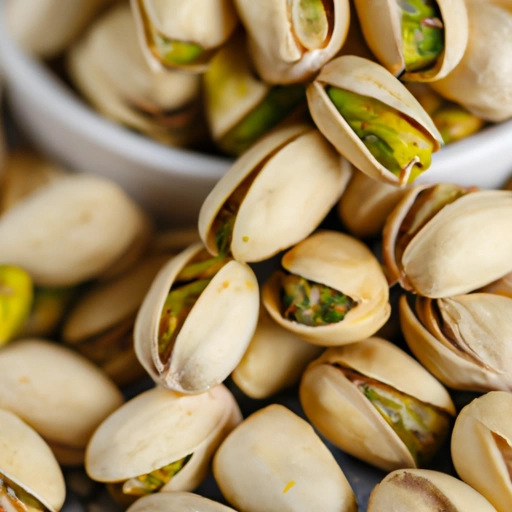Pistachio Nut
Description

The pistachio nut, a small, yet mighty ingredient, has been valued for its unique flavor, vibrant green hue, and versatile culinary applications. Revered both as a snack on its own and as a component in various dishes, the pistachio nut is a staple in many global cuisines. This kernel of the Pistacia vera tree is not only packed with nutrients but also adds a delightful crunch and ornamental appeal to any plate it graces.
Common uses
Pistachio nuts are commonly consumed as a roasted and salted snack, incorporated into baked goods, or sprinkled atop savory dishes. They also play a starring role in traditional Middle Eastern desserts such as baklava and halva, and are a key ingredient in Italian gelato and mortadella.
Nutritional value
Calories
A 1-ounce (28.35 grams) serving of pistachio nuts contains approximately 156 calories.
Protein
This same serving size provides about 6 grams of protein, contributing to muscle maintenance and growth.
Fat
Pistachios are rich in healthy fats, with roughly 12.5 grams of fat per ounce, predominantly monounsaturated and polyunsaturated fats.
Carbohydrates
There are about 8 grams of carbohydrates in a 1-ounce serving, of which 3 grams are dietary fiber, aiding in digestion.
Vitamins
Pistachios are an excellent source of B vitamins, particularly vitamin B6, and also contain vitamin K and vitamin E.
Minerals
The nuts are packed with minerals such as potassium, phosphorus, magnesium, calcium, and iron, all essential for various bodily functions.
Health benefits
Regular consumption of pistachio nuts has been associated with several health benefits, including reduced risk of heart disease, weight management support, and blood sugar control. Their high antioxidant content can also contribute to reduced inflammation and oxidative stress.
Potential risks
As with any food, overconsumption can lead to adverse effects, including weight gain due to their high calorie and fat content. Additionally, pistachios may cause allergic reactions in individuals with nut allergies, and excessive intake of salted varieties can contribute to increased sodium levels.
Common recipes
Pistachio nuts are used in a variety of recipes ranging from sweet to savory. Common preparations include pistachio-crusted meats, pistachio pesto, and an array of desserts such as cookies, cakes, and pastries.
Cooking methods
These nuts can be enjoyed raw, roasted, or ground into pastes. They are often toasted to enhance their flavor before being added to various dishes.
Pairing with other ingredients
Pistachios pair well with flavors such as chocolate, citrus, and dried fruits, as well as with cheeses and other nuts. They also complement both sweet and savory profiles, making them a versatile ingredient in culinary creations.
Summary
In conclusion, the pistachio nut is not only a delectable and nutritious ingredient but also one with a rich history and diverse culinary applications. Whether used in traditional dishes or modern cuisine, pistachios add both flavor and a nutritional boost to any meal. With thoughtful consumption, they can be a valuable addition to a balanced diet.